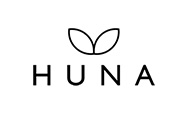Your cart is currently empty!
The Health Benefits of Meditation and Mindfulness

Not sure if you’re aware of this- but there are many health benefits that come from practicing meditation and mindfulness. And even just one of these physical and mental benefits is reason enough to introduce a regular meditation practice into your life. There is a ton of research supporting meditation as a method to reduce stress, anxiety, and depression, aid with processing information and decision-making, and a host of other mental health benefits. It’s also good for the physical body by improving breathing, lowering blood pressure, and helping with pain management.
Benefits of Meditation & Mindfulness
Meditation helps to reduce ruminative thoughts. You will become more aware of your own thought patterns and how often they come up. This allows you to observe your thoughts and bodily sensations without judgment, perhaps over time allowing you to process them. Being more aware of your own thoughts as they happen fosters mindfulness and compassion for yourself and others.
Mindfulness is a word thrown around a lot these days and with good reason. Wikipedia’s definition is as follows- “Mindfulness is the psychological process of bringing one’s attention to experiences occurring in the present moment, which can be developed through the practice of meditation and other training.” So often we mentally check-out and go into autopilot. We do repetitive tasks day in and day out- without thinking; we stare at screens scrolling endlessly. By being mindful, you get to fully experience life as it’s happening. You don’t worry about the past or future, you’re just living here in the now.
We’re an over-stimulated culture always thinking about the next thing we have to do, worrying about this or that. It’s no wonder we’re so anxious! When we meditate, we step back from the over-stimulation and let our minds relax and our bodies fully breathe. Meditation should be enjoyable.
The Science of Meditation & Mindfulness
John Hopkins University’s study found “moderate evidence that mindfulness meditation alleviates pain, anxiety and depression—the latter two to a similar degree as antidepressant drug therapy.” (https://www.scientificamerican.com/article/is-meditation-overrated/). For physical health- meditation helps to lower blood pressure through controlled, slow breathing.
Incredibly, meditation has even shown increased grey matter in the brain! In a study conducted by MGH Psychiatric Neuroimaging Research Program, participants had MRIs of their brains taken before and after an 8 week meditation program. “The analysis of MR images, which focused on areas where meditation-associated differences were seen in earlier studies, found increased grey-matter density in the hippocampus, known to be important for learning and memory, and in structures associated with self-awareness, compassion and introspection. Participant-reported reductions in stress also were correlated with decreased grey-matter density in the amygdala, which is known to play an important role in anxiety and stress.” (http://www.massgeneral.org/about/pressrelease.aspx?id=1329).
There are many reports that meditation can reduce chronic pain and build up pain tolerance. From a study published by The Journal of Neuroscience: “Mindfulness meditation, a practice premised on directing nonjudgmental attention to arising sensory events, reduces pain by engaging mechanisms supporting the cognitive control of pain.” (http://www.jneurosci.org/content/36/11/3391.full)
So with all these benefits, you want to start meditating now, right? Of course you do!
There are many types of meditation and it may take some trying to find the right one(s) for you. Here are a few tips to get started:
- Set yourself up for success. Turn your phone to silent; reduce the noise in the room as much as you can. If you’re practicing a stillness meditation, get yourself comfortable whether that’s sitting on the floor on meditation cushions, having your back propped against a wall, sitting in a comfortable chair, or lying down. If you’re practicing an active meditation such as yoga, dance, or art, get the tools you need ready. You may want to meditate in the morning to start your day or in the evening to unwind or a few minutes during your workday. Any option is great!
- If you’re new to stillness meditation, I would recommend using a guided system. My personal favourite guided meditations are found through an App called Calm. It’s free (though you can sign up for a subscription and get access to more content) and has a variety of meditation practices. There’s timed silent meditation, guided mindfulness practice, guided loving-kindness, and a host of others. YouTube is another great source for guided meditation practices.
- Don’t overdo it your first time. It’s great to aim high (like an hour), but maybe start at 5 or 10 minutes and build your meditation practice up from there.
You may decide to attend a meditation group to meditate collectively and be part of a group discussion. Having this structure may help you to get started in growing your personal practice.
Introducing Meditation and Mindfulness into your life can be nothing short of life-changing. The physical and mental health benefits are real and significant. So- what are you waiting for? Let’s get meditating!
Written by Holly Pluchinski, Certified Yoga Instructor, Owner of Kayfabe Yoga, and Huna Operations Assistant.
- 10 Holistic Skin Firming Tips That Actually Work - June 22, 2025
- What Does Facial Toner Do & Why You Should Use One - June 18, 2024
- Beyond Sunscreen: 7 Ways to Protect Skin from the Inside Out in Summer - June 18, 2024



